IELTS HOPECO Reading: Unit 3 - Getting from A to B (WB 4-5.5)
Reading 1
Labelling a diagram
1. You are going to read a passage about an airliner. Answer the question below.Read the title and subtitle and look at the picture. What do you think the passage will be about?
a an airliner that is not the same as other airliners
b reasons why a new airliner has been so successful
c the problems that a new type of airliner has been having
2. Read the passage carefully. Complete labels (1-7) on the diagram. Choose NO MORE THAN TWO WORDS AND/OR A NUMBER from the passage for each answer.
|
The Boeing 787
The Boeing 787 'Dreamliner' has been described as the airliner of the future. We look at the technology that makes it differentUntil now, airliner fuselages have been made of aluminium sheets. Large aircraft can have 1,500 of these sheets with between 40,000 and 50,000 metal fasteners. The 787 is the first airliner to be built with a one-piece fuselage made from a special material called 'composite'. Not only does this make the airliner quicker and easier to build, but it also makes it a lot lighter. The advantage of this weight reduction is that the 787 uses 20 percent less fuel than other airliners of a similar size, which makes it much more environmentally friendly. The reduced weight also means that the Boeing 787 can fly further than many other airliners of a similar size, carrying 210 passengers or more up to 15,200 kilometres before refuelling. Sometimes an airliner needs to change from one type of engine to another. This is a difficult and time-consuming process. The 787 has a revolutionary engine attachment on the wing which means that the engines can be changed in a much shorter time. The case containing the engine is also different from those on other airliners. It has been designed to cut down the noise from the engine, making it less noisy for passengers in the cabin as well as for people on the ground. In addition to a quieter cabin, passengers will also benefit from windows which are 65 percent larger than those on other airliners, giving them a much better view of the world passing by below them. The windows also have a unique facility which allows passengers or cabin crew to control the amount of light that enters them. This is thanks to a liquid in the window which reacts to an electric current. When a passenger or cabin crew member presses a button, the current causes a chemical reaction in the window which darkens the liquid. |
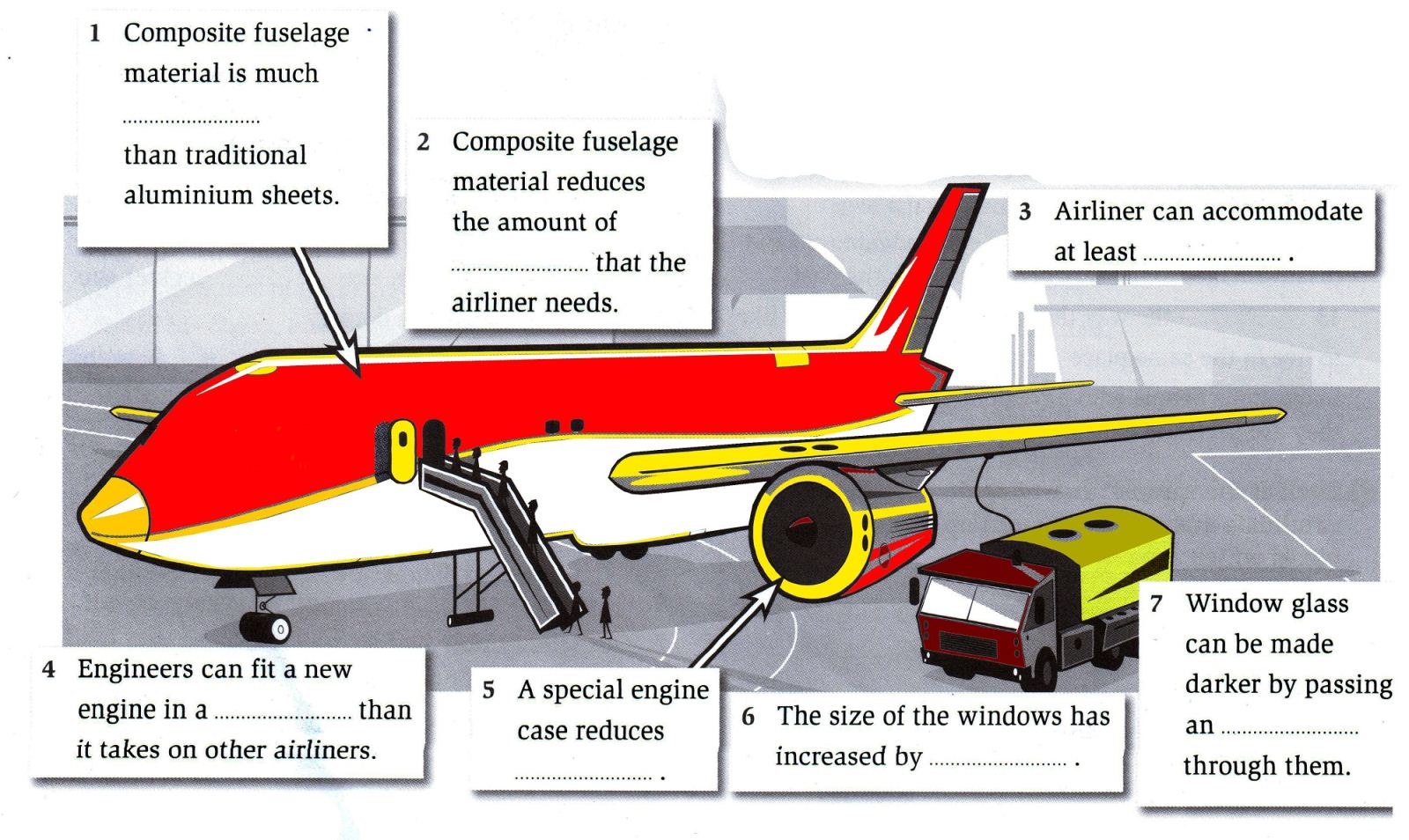
Reading 2
Matching headings 3. You are going to read a passage about city streets. Before you begin, look at the two pictures and answer the question.
What do you think the passage will be about?
a the difference between towns and cities now, and towns and cities in the past
b how towns and cities are planned and built
c removing cars and other vehicles from streets in towns and cities
4. Read the passage quickly and underline words 1-8. Then match them with their definitions, a—h.
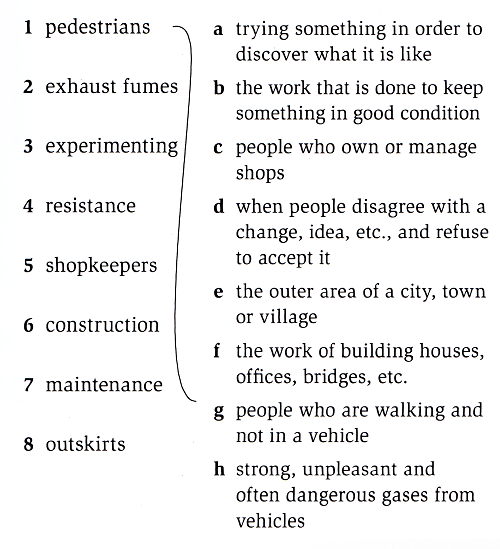
| Pedestrians only How traffic-free shopping streets developed A. The concept of traffic-free shopping areas goes back a long time. During the Middle Ages, traffic-free shopping areas known as souks were built in Middle Eastern countries to allow people to shop in comfort and, more importantly, safety. As far back as 2,000 years ago, road traffic was banned from central Rome during the day to allow for the free movement of pedestrians, and was only allowed in at night when shops and markets had closed for the day. In most other cities, however, pedestrians were forced to share the streets with horses, coaches and, later, with cars and other motorised vehicles. C At first, there was resistance from shopkeepers. They believed that such a move would be bad for business. They argued that people would avoid streets if they were unable to get to them in their cars. When the first streets in Europe were closed to traffic, there were even noisy demonstrations, as many shopkeepers predicted they would lose customers. D. However, research carried out afterwards in several European cities revealed some unexpected statistics. In Munich, Cologne and Hamburg, visitors to shopping areas increased by 50 percent. On Copenhagen's main shopping street, shopkeepers reported sales increases of 25-40 percent. Shopkeepers in Minneapolis, USA, were so impressed when they learnt this that they even offered to pay for the construction and maintenance costs of their own traffic-free streets. E. With the arrival of the traffic-free shopping street, many shops, especially those selling things like clothes, food and smaller luxury items, prospered. Unfortunately, it wasn't good news for everyone, as shops selling furniture and larger electrical appliances actually saw their sales drop. Many of these were forced to move elsewhere, away from the city centre. Today they are a common feature on the outskirts of towns and cities, often situated in out-of-town retail zones with their own car parks and other local facilities. 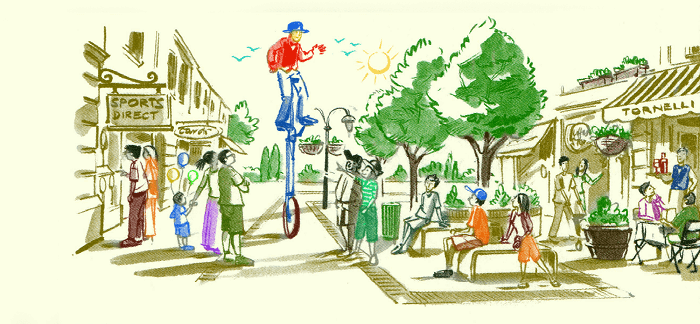 |
5. Now match the headings i-vii below with paragraphs A-E in the passage on page 19. There are two headings that you do not need.
|
List of Headings
|
Mọi thông tin chi tiết, các bạn vui lòng liên hệ:
DU HỌC UNIGLOBE
10/3 Nguyễn Thị Minh Khai, Phường Đa Kao, Quận 1, TP.HCM
ĐT: (08) 35 173 345 – 35 173 678
Email: info@uniglobe.edu.vn
Website: www.uniglobe.edu.vn


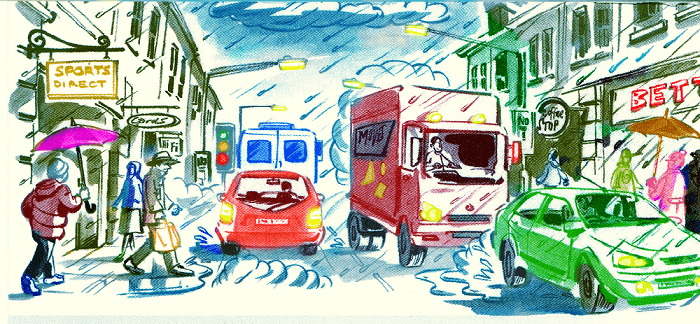

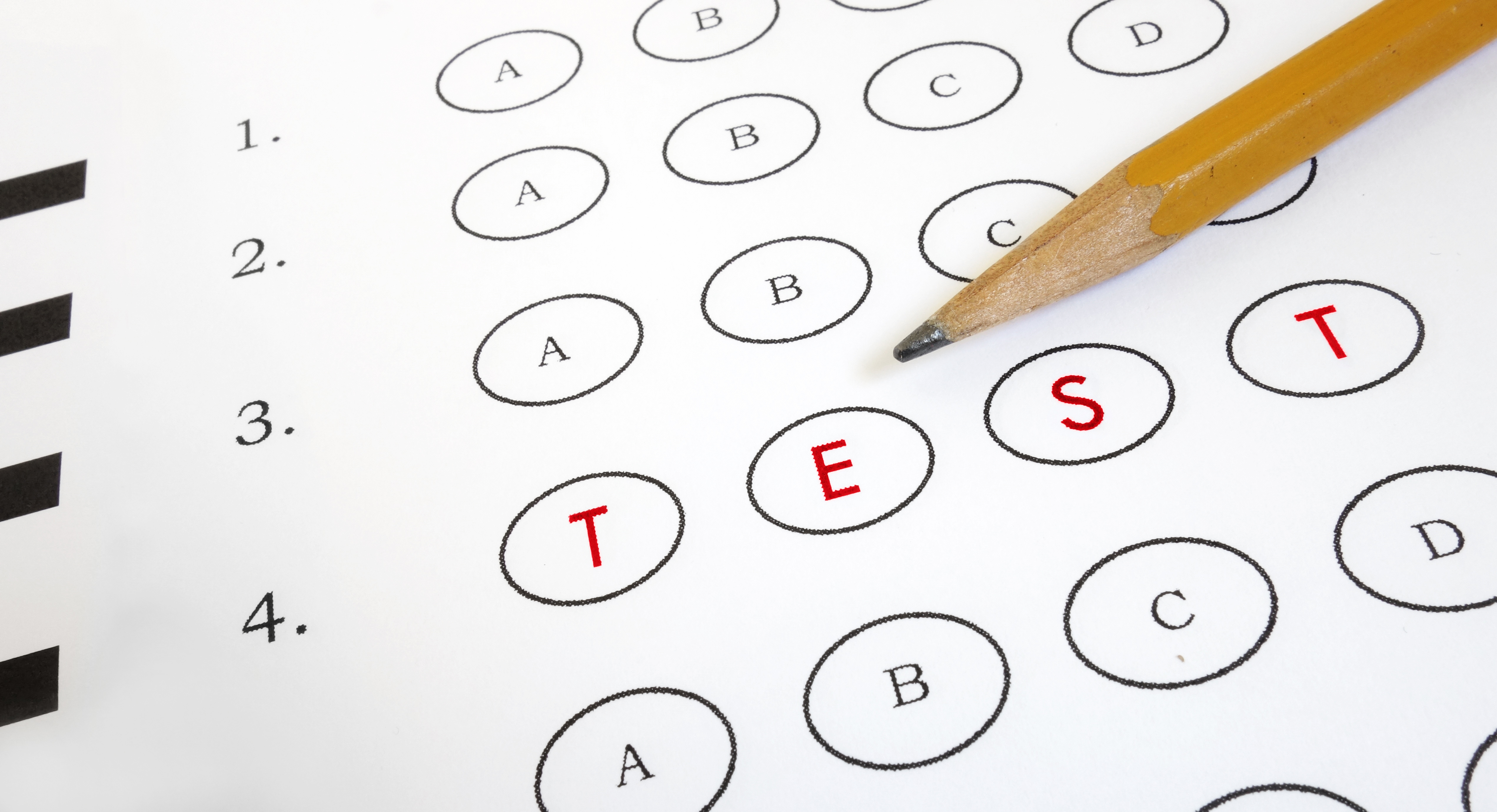


bình luận